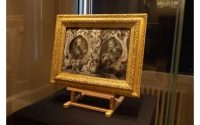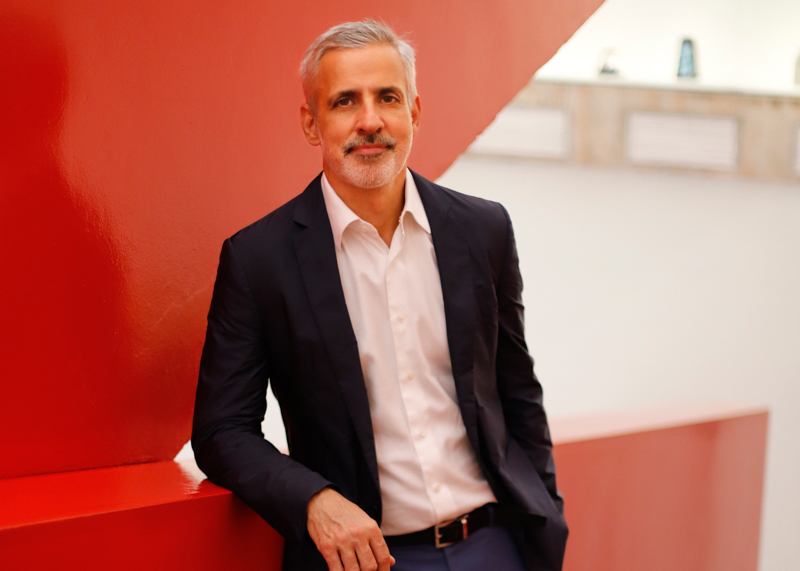Harald Falckenberg, German Art Collector with a Discerning Eye, Dies at 80
Harald Falckenberg, a German art patron whose willingness to support conceptual art made him one of the world’s top collectors, died on Sunday in Hamburg at 80.
His passing was announced on Tuesday by the Deichtorhallen Hamburg, a German art museum that runs a 65,000-square-foot building that is devoted to Falckenberg’s 2,400-piece collection.
“His legacy will not be forgotten in the art world,” Dirk Luckow, director of the Deichtorhallen Hamburg, said in a statement. “It is thanks to his intense passion for art that his collection can now be counted among the most important private collections of international standing.”
Within Germany, Falckenberg is well-known for his collection of art that skews subversive and difficult. He made headlines within his home country for putting so much money and support into conceptual art—and, periodically, for speaking out about the rabid growth of the art market, a position that set him apart from many other collectors.
“The market and the auction houses have become bigger opinion-formers than the critics,” he told the Art Newspaper in 2011. “In order to be noticed, artists have to position themselves through self-promotion.”
He ranked on the ARTnews Top 200 Collectors list 14 times, appearing in each edition between 1999 and 2013. But he did not make much of his status, brushing off the list as something that could only partially be believed. “One can’t trust statistics,” he once told Arterritory.
Born in 1943 in Hamburg, he would become a practicing lawyer before taking a leadership position at Elaflex, the family business, which is known in Germany for producing refueling equipment. That pivot happened during the ’80s, but it wasn’t until 1994 that he began collecting. He often said he viewed buying art as a means of social engagement.
Falckenberg frequently broke down his collection into three areas. One was American artists, with ones like John Baldessari, Richard Prince, Mike Kelley, and Paul McCarthy forming his collection’s cornerstones. Another was German artists such as Martin Kippenberger. And the third was what called “playful” art, by the likes of Franz West, Öyvind Fahlström, Dieter Roth, and the Viennese Actionists, whose contributions to art history he believed to be underrated.
The collection continued to grow. It now includes a focus on photography, with artists like Wolfgang Tillmans, William Eggleston, and Sophie Calle represented, and also features pieces by Sarah Lucas, Monica Bonvicini, Andrea Fraser, Christian Jankowski, among other notable artists.
Unlike other collectors, Falckenberg’s activities went beyond buying art. He published art theory, including the 2002 book Civil Disobedience: Art in Plain Language, and even invested himself in art writing more broadly, acquiring the publishing houses Merve Verlag and Philo Fine Arts. He also served as chairman of the Hamburger Kunstverein from 1999 to 2017.
In 2008, he opened a museum for his collection, the Sammlung Falckenberg, which is located in a former factory in Hamburg’s Harburg district. The museum is now home to large-scale installations by Jonathan Meese and Jon Kessler, and is also known for staging major exhibitions, including surveys for Marilyn Minter, Cindy Sherman, and Philip Guston. Since 2011, the Sammlung Falckenberg has been facilitated by the Deichtorhallen Hamburg, whose loan agreement for the space is set to continue through 2032.
Yet Falckenberg, unlike other collectors, did not make too much of private museums, which he saw as being part of a larger problem afflicting an overly commercialized art world. “The role of private museums should not be overstated, however,” he wrote in the Art Newspaper in 2014. “They are a reaction to the trend of traditional museums putting more and more emphasis on temporary exhibitions over their own collections.”
That same year, he also wrote of the importance of collecting in the Financial Times. “The end of art has repeatedly been announced,” he wrote. “But there is no end: art is always open to new developments. Every serious collection has to face this challenge.”



